Space News
Insider
35

Image Credit: Insider
Elon Musk's slice of SpaceX is now worth $43 billion more than his Tesla stake
- Elon Musk's slice of SpaceX is worth $43 billion more than his Tesla stake, per Bloomberg.
- The value gap between Elon Musk's stakes in Tesla and SpaceX has widened to $43 billion following the slide in the EV maker's stock.
- Musk's 13% stake in Tesla is worth $92.6 billion, while his stake in SpaceX is valued at $136 billion.
- Musk's net worth has decreased by $130 billion this year due to the fall in Tesla stock.
Read Full Article
2 Likes
Nasa
115

Image Credit: Nasa
Interview with Michiharu Hyogo, Citizen Scientist and First Author of a New Scientific Paper
- Michiharu Hyogo, a citizen scientist, achieved the remarkable feat of being the first author of a scientific paper, showcasing the contributions of NASA's citizen scientists to research.
- Hyogo's paper 'Unveiling the Infrared Excess of SIPS J2045-6332' got accepted in the journal Monthly Notices of the Royal Astronomical Society, highlighting his dedication to the project.
- Hyogo, currently residing in Tokyo, Japan, has been actively involved in NASA projects like Disk Detective, Backyard Worlds: Planet 9, and Planet Patrol.
- Through these projects, Hyogo gained hands-on experience in analyzing astronomical data, collaborating with experts, and contributing to real research efforts.
- His significant discovery in the project focused on identifying physical characteristics of a celestial object, leading to the detection of a low-mass companion with intriguing features.
- Upon his paper's acceptance, Hyogo expressed immense pride and a sense of accomplishment for making a positive impact on society without traditional affiliations.
- He shared valuable advice for other citizen scientists, emphasizing collaboration, clear communication, and leveraging AI tools for research efficiency.
- Hyogo thanked his collaborators for their support and expressed plans to continue his astronomical research journey, encouraging others to follow along.
- His journey exemplifies the potential of citizen scientists to contribute meaningfully to scientific discoveries and publications, showcasing the power of community-driven research.
- Hyogo's story serves as inspiration for aspiring citizen scientists, highlighting the opportunities and impact that can arise from actively engaging in scientific projects.
Read Full Article
6 Likes
Nasa
427
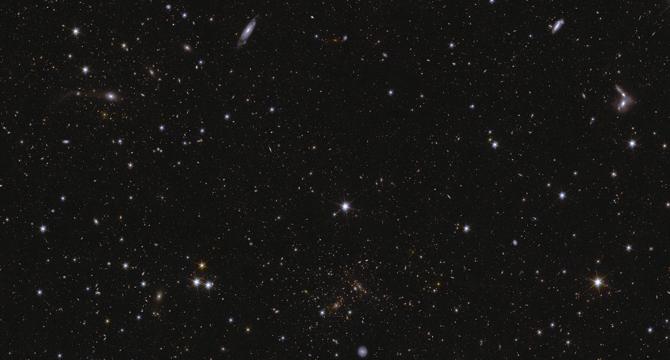
Image Credit: Nasa
ESA Previews Euclid Mission’s Deep View of ‘Dark Universe’
- The Euclid mission, led by ESA and with contributions from NASA, aims to understand the universe's accelerating expansion and dark energy through billions of galaxy images.
- A recent data release by ESA provides a glimpse of Euclid's progress, analyzing images of galaxies captured by the space telescope.
- Observations of Euclid's deep fields, including 26 million galaxies up to 10.5 billion light-years away, were part of the data release.
- Euclid, launched in 2023, will observe over 1.5 billion galaxies during its six-year prime mission, studying the history of the universe's expansion.
- The mission seeks to investigate dark energy's influence on cosmic history, measuring the rate of expansion and changes over time.
- Euclid will create 3D maps of the universe to study dark energy, including the effects of dark matter through gravitational lensing.
- The released data covers 63 square degrees of the sky, with 2,000 square degrees observed to date and more observations planned.
- Euclid's deep field observations aim to reveal insights into dark energy and the universe's evolution, with upcoming cosmology data expected in 2026.
- Euclid's mission involves collaboration with NASA, with scientific contributions, instrument development, and data analysis supported by multiple teams.
- By studying distant galaxies and dark matter, Euclid aims to provide new clues about the fundamental nature of dark energy and the universe.
Read Full Article
25 Likes
Nasa
178
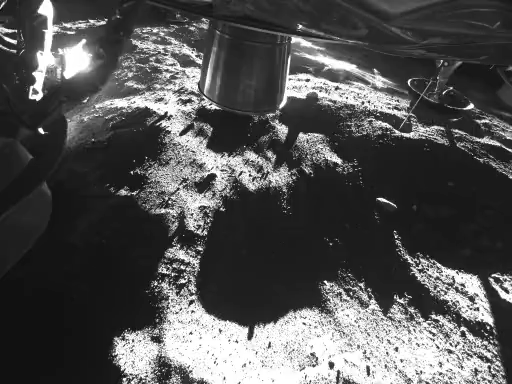
Image Credit: Nasa
Goodnight, Moon: NASA Cameras on Blue Ghost Capture Lunar Sunset
- NASA Cameras on Blue Ghost lander captured a lunar sunset.
- The images were taken by Stereo Cameras for Lunar-Plume Surface Studies (SCALPSS) 1.1.
- The data collected by SCALPSS will help researchers understand the effects of a lander's engine plumes on the lunar soil.
- The SCALPSS project is funded by NASA's Space Technology Mission Directorate.
Read Full Article
10 Likes
Discover more
Digitaltrends
205
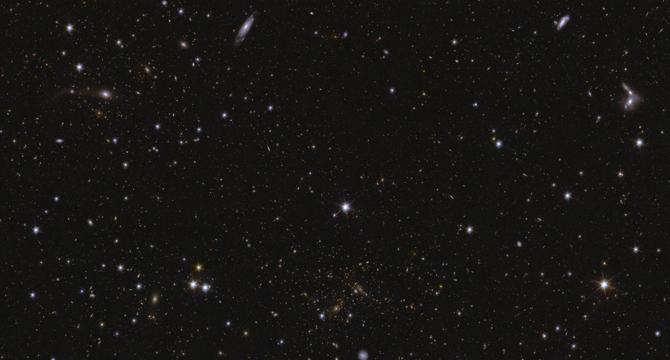
Image Credit: Digitaltrends
Tens of thousands of galaxies glitter in first mosaics from Euclid Space Telescope
- Scientists working with the Euclid Space Telescope have released their first treasure trove of data, showing distant galaxies in deep field images of stunning detail.
- The telescope is designed to study dark matter and tracks the movements of galaxies to provide clues about dark matter's gravitational effects.
- The data release includes three mosaics covering hundreds of thousands of galaxies, showcasing their various shapes and sizes.
- With a mission aim to capture over 1.5 billion galaxies in six years, Euclid will employ both human and AI capabilities to classify images of galaxies.
Read Full Article
12 Likes
Metro
80
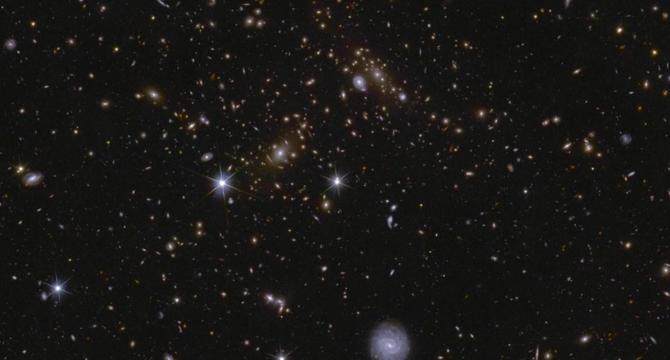
Image Credit: Metro
Part of universe that’s 240,000,000 light years away revealed in new images
- Breathtaking images of thousands of galaxies taken by a 609-megapixel camera from the Euclid telescope reveal the 'dark universe.'
- The telescope captured more than 380,000 galaxies, some appearing warped by strong lensing effect.
- Euclid has observed 26,000,000 galaxies, with the farthest being 10,500,000,000 light-years away.
- Over 500 galaxies in the released images exhibit strong lensing, creating unique visual effects like arcs and halos.
- Euclid also identified transient phenomena such as supernovae and fast radio bursts.
- Astronomers are intrigued by dark matter's invisible nature, a key component holding galaxies together.
- Euclid's observations aim to unravel mysteries surrounding dark matter and dark energy, essential for understanding the universe.
- The telescope's panoramic images offer insights into globular clusters, strong lenses, and dark matter distribution.
- Artificial intelligence and citizen scientists are aiding in examining Euclid's images and data.
- Scientists are hopeful Euclid will shed light on 'unknown unknowns' of the universe, such as the nature of dark energy and dark matter.
Read Full Article
4 Likes
Guardian
156
Image Credit: Guardian
Scientists hail ‘avalanche of discoveries’ from Euclid space telescope
- The European Space Agency's Euclid mission has captured images of 26m galaxies, providing researchers with unprecedented insight into the forces that shape the cosmos.
- The first batch of survey data has allowed researchers to create a detailed catalogue of 380,000 galaxies, revealing the rich variation in galactic structures.
- Observations from Euclid have captured 500 strong gravitational lensing events, helping to shed light on the nature and clumpiness of dark matter.
- Euclid is expected to capture images of more than 1.5bn galaxies over six years, potentially leading to new discoveries about the nature of dark matter and dark energy.
Read Full Article
9 Likes
Livescience
111
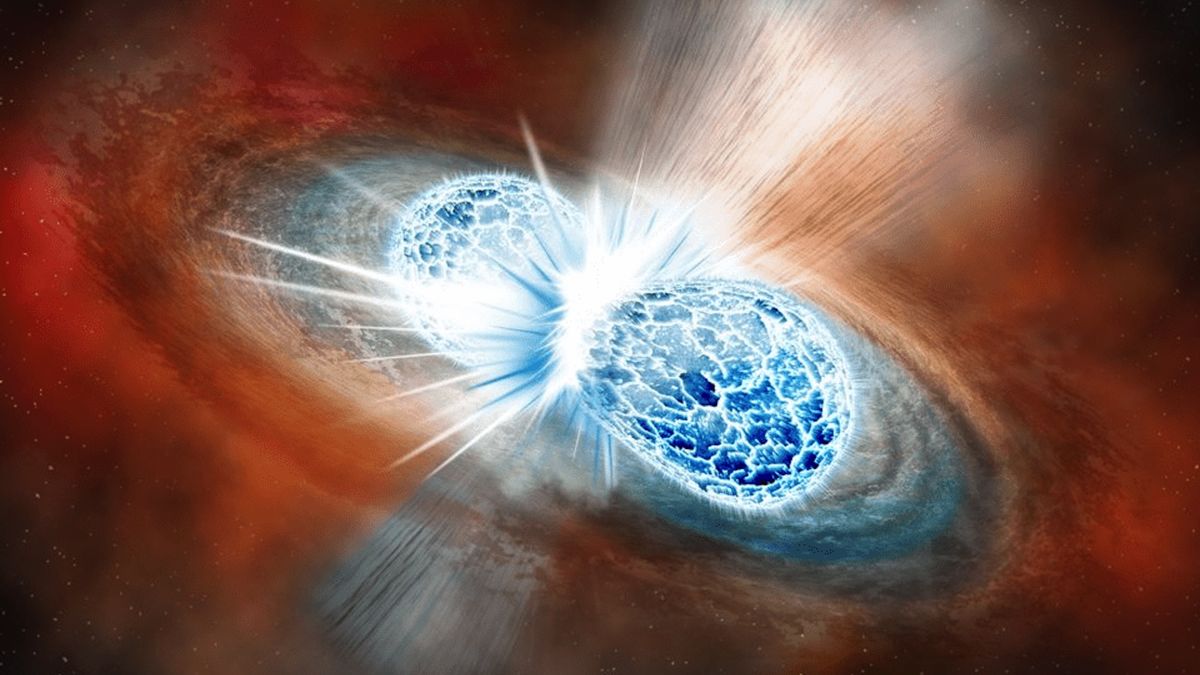
Image Credit: Livescience
Scientists find evidence of 'supernova graveyard' at the bottom of the sea — and possibly on the surface of the moon
- Researchers have found evidence of a 'supernova graveyard' in the deep sea, potentially originating from a cosmic explosion called a kilonova 10 million years ago.
- Samples from the ocean revealed traces of rare radioactive plutonium believed to be debris from these cosmic events, which could also be present on the moon.
- The discovery of isotopes like plutonium suggests the occurrence of kilonovas, explosive events spawned by colliding binary neutron stars.
- Scientists aim to conduct further tests, particularly on lunar samples, to strengthen their theories and validate the existence of past kilonova events.
- The Artemis missions, set to return humans to the moon, offer hope for more abundant lunar soil samples for analysis.
- By analyzing additional moon soil, researchers seek to confirm the occurrence, timing, and location of ancient cosmic explosions like kilonovas.
- The moon's geology provides a clearer picture of how cosmic debris settles compared to Earth's more complex environmental factors.
- With upcoming Artemis missions, scientists hope to gain access to more lunar samples to advance their research on cosmic events.
- Fields and his team are working towards proving their theories to the scientific community and making a compelling case for studying these phenomena further.
- The collaboration between research efforts and space missions like Artemis could offer valuable insights into the history of cosmic explosions and their aftermath.
Read Full Article
6 Likes
Knowridge
187
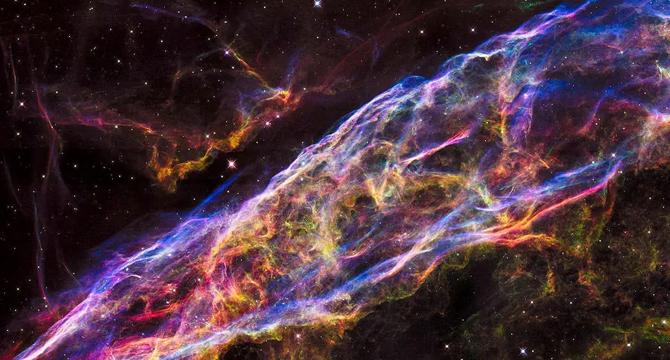
Image Credit: Knowridge
Can any nearby supernova cause a mass extinction
- A nearby supernova can cause mass extinction by breaking up the ozone layer on Earth, leaving it vulnerable to ultraviolet radiation from the Sun.
- The dangerous outputs of a supernova, such as X-rays and gamma rays, can tear apart molecules and cause the formation of nitrogen oxides, including nitrous oxide (laughing gas).
- Without the ozone layer, photosynthetic microorganisms like algae become vulnerable, leading to ecosystem collapse and a mass extinction.
- However, there are no known supernova candidates within 30 light years of Earth, providing a relief from the potential danger.
Read Full Article
11 Likes
Knowridge
258

Image Credit: Knowridge
Why we are so scared of space—and how this fear can drive conspiracy theories
- The fear of space is driven by concerns about asteroid strikes, climate change, wars, and unknown threats from above.
- Daniel Deudney warns that technologies used for planetary defense could also be weaponized in military conflicts.
- Deudney suggests limiting human activities in space to avoid catastrophic conflicts and species extinction.
- Ancient tales like the Cosmic Hunt and modern fears like UFOlogy highlight deep fears about space and human actions.
- Belief in conspiracies related to space, such as UFO cover-ups, stems from underlying fears of space as a threat.
- Chinese science fiction author Cixin Liu likens space to a 'dark forest' where civilizations hide from each other.
- Ground bias leads to viewing space as a threatening external entity rather than part of our interconnected world.
- Fears about space extend to theories like viruses originating from space, as seen in the COVID skeptics' beliefs.
- Wickramsinghe's theory of viruses from space driving pandemics demonstrates how anxieties about space are used to explain earthly phenomena.
- While legitimate concerns about space exist, a fear of space can intertwine with distrust of authorities and lead to belief in conspiracy theories.
Read Full Article
15 Likes
Brighter Side of News
8

Image Credit: Brighter Side of News
Where do meteorites of different types come from?
- Meteorites originate from meteoroids and asteroids in the asteroid belt, with recent research linking them to specific regions within the belt.
- Traced meteorite falls provide a map of the asteroid belt, aiding in planetary defense and asteroid evolution studies.
- Most meteorites come from asteroid families formed by collisions, such as the Koronis and Flora families.
- H-chondrites trace back to the Koronis family, while L and LL chondrites correspond to the Flora and Hertha families.
- Asteroid fragments reaching Earth do so through orbital evolution due to forces like the Yarkovsky effect and resonances with Jupiter.
- Efficiency of resonances like the ν6, 3:1, and 5:2 varies in delivering meteorites to Earth from the asteroid belt.
- Meteorites can have exposure ages indicating long periods within asteroids before being ejected towards Earth.
- Advancements in technology, like all-sky camera networks, have improved tracking of meteorite falls and origins in recent years.
- Efforts to detect more asteroids before impact and refine observations aim to enhance understanding of the asteroid belt's influence on Earth.
- Research in the journal Meteoritics & Planetary Science details findings on the origins and delivery resonances of meteorites.
Read Full Article
Like
Earthsky
254
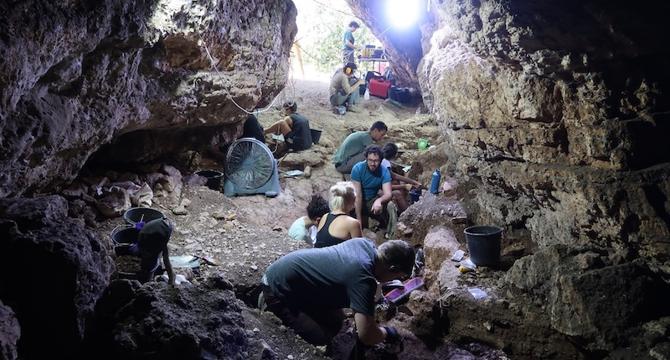
Image Credit: Earthsky
New evidence: humans and Neanderthals interacted in Israel
- Excavations at Tinshemet Cave in Israel reveal evidence of interaction between early modern humans and Neanderthals, showcasing shared cultural and technological practices.
- The findings include stone tools, animal bones, ochre, and intentional human burials, indicating a connection between the two human species.
- Researchers suggest that modern humans and Neanderthals co-existed and exchanged common practices in the Levant around 100,000 years ago.
- The study, published in Nature Human Behavior, highlights the significance of population interactions in driving cultural and technological developments in history.
- Archaeological evidence from Tinshemet Cave and other Levant sites supports the idea of human connections and behavioral uniformity in the Middle Paleolithic period.
- Discoveries of stone tools, animal bones, ochre use, and intentional burials point towards symbolic thought and social complexity among early humans.
- The presence of ochre, a clay pigment used in cultural practices, suggests the cultural exchange and symbolic behavior between modern humans and Neanderthals.
- Formal burial customs observed at Tinshemet Cave around 100,000 years ago indicate increased social interactions and potential belief systems among early human populations.
- The archaeological findings at Tinshemet Cave provide valuable insights into the dynamic interactions and cultural exchanges between modern humans and Neanderthals in the Levant.
- This study underscores the shared history and cooperation between different Homo groups, shedding light on the development of common behavioral practices in the region.
Read Full Article
15 Likes
Earthsky
53

Image Credit: Earthsky
Equinox fun: Track sun’s shift between now and the solstice
- Around the equinoxes, the movement of the sun along the horizon is most noticeable.
- Observing the sun's movement along the horizon can be done by tracking the sunrise or sunset point.
- The sun's movement along the horizon depends on the time of year and latitude.
- At around 40 degrees north latitude, the sun's daily movement is equivalent to its own diameter.
Read Full Article
3 Likes
Knowridge
361

Image Credit: Knowridge
Can planets around white dwarfs support life?
- New research challenges the belief that planets orbiting white dwarf stars cannot support life.
- Caldon Whyte, a Ph.D. student in space sciences at Florida Tech, conducted a study to examine the potential of white dwarfs to host life-supporting planets.
- His research indicates that planets in the habitable zone around white dwarfs could still receive enough energy to support processes such as photosynthesis and UV-driven abiogenesis.
- These findings open up possibilities for future space exploration and the search for planets with life-supporting conditions.
Read Full Article
21 Likes
Earthsky
4
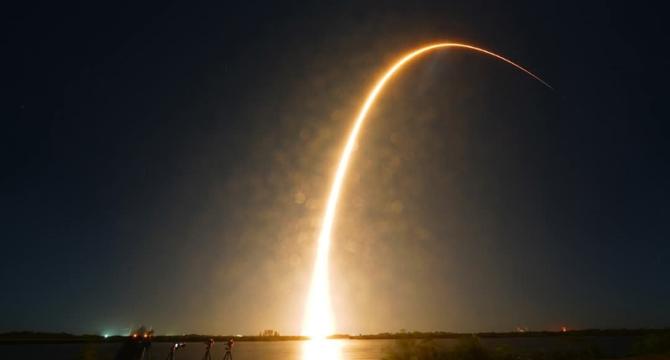
Image Credit: Earthsky
Blue Ghost ends its pioneering mission with the sunset
- Firefly Aerospace's Blue Ghost mission successfully completed the first commercial moon landing on March 16, 2025 after a 14-day surface mission on Mare Crisium.
- Blue Ghost landed on the moon's near side in Mare Crisium on March 2, 2025, becoming the first commercial company in history to achieve a successful moon landing.
- The mission journeyed to the moon over 45 days, orbiting Earth for 25 days and the moon for 16 days before landing on the lunar surface for a 14-day operation period.
- On the moon, Blue Ghost conducted various tasks including soil sampling, drilling, capturing images of the lunar sunset, and testing equipment resilience to radiation.
- The mission carried 10 NASA science payloads to the moon to study the lunar environment before the Artemis 3 mission, which is scheduled for 2027.
- Blue Ghost's successful mission marks a significant advancement in commercial exploration, with Firefly Aerospace making history in lunar exploration.
- The mission captured stunning videos and images of the moon's surface, Earth, and the surrounding space during its operation.
- Blue Ghost's pioneering mission concluded as the sun set on the moon, signaling the start of a two-week lunar night phase.
- Firefly Aerospace's mission aimed to expand scientific knowledge of the moon's environment and pave the way for future lunar explorations.
- Blue Ghost's successful mission demonstrates advancements in commercial space exploration and the potential for further lunar research and missions.
Read Full Article
Like
For uninterrupted reading, download the app